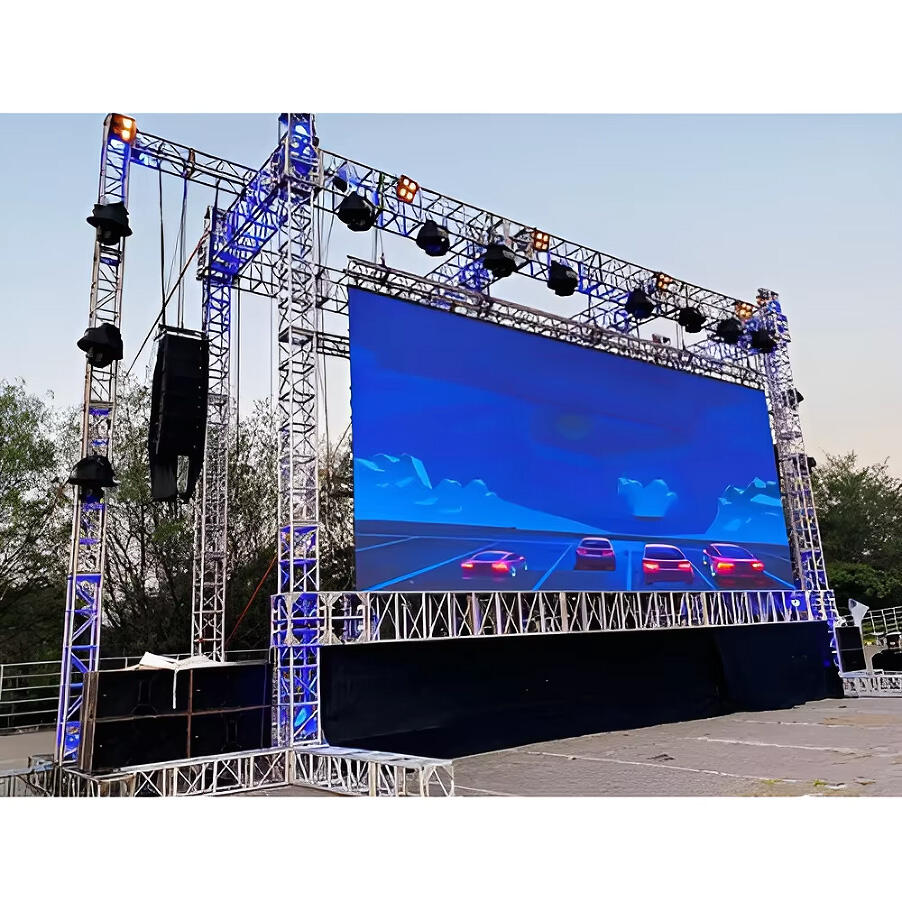Why LED Displays Replace Traditional Communication Methods
Higher Engagement Through Dynamic Content
Dynamic content on LED screens significantly boosts viewer engagement and interaction. These displays allow real-time updates, keeping the information fresh and relevant, which is a major improvement over static signage that can quickly become outdated. Research indicates that LED displays capture 400% more views compared to static signs, substantially increasing audience engagement. This heightened visibility often translates to better message retention, which can be critical for businesses aiming to communicate effectively with their audience. The ability to support multimedia content—such as videos, animations, and interactive elements—further enhances the appeal of LED displays, drawing viewers in and maintaining their interest.
Superior Visibility in Various Environments
LED displays surpass traditional signage in visibility across different environments. Their high brightness levels and contrast ratios ensure clear readability whether indoors or outdoors. Even in challenging conditions like direct sunlight, LED screens maintain their visibility, offering a significant advantage over conventional methods. This capability is particularly beneficial for outdoor signage, where elements like glare can severely impact viewing quality. Additionally, LED displays often come equipped with adjustable brightness settings that can be tailored based on ambient light conditions, ensuring optimal visibility at all times. This adaptability enhances the efficacy of messaging, allowing it to reach a wider audience regardless of the environment.
Essential Features of Modern LED Technology
Energy Efficiency and Reduced Carbon Footprint
One of the standout features of modern LED displays is their superior energy efficiency, consuming up to 75% less power than traditional display technologies like LCD or projectors. This significant reduction in energy usage not only leads to lower electricity bills but also contributes to a much-reduced carbon footprint, supporting global sustainability efforts. Numerous studies have consistently highlighted how transitioning to LED technology can substantially reduce energy costs and operational expenses, making it an economically advantageous choice for businesses. With increasing environmental concerns, adopting LED technology becomes an effective way for companies to align with sustainability goals while also benefiting from financial savings.
Customizable Configurations for Every Space
Modern LED technology offers unparalleled flexibility, with customizable configurations that can fit any space, whether large or small. From curving LED displays to expansive video walls, businesses have the freedom to design displays that perfectly align with their brand's visual identity and the architectural features of their specific location. Whether it’s a high-resolution video wall in a corporate office or a seamless LED screen tailored for outdoor environments, these displays can be customized in terms of size, resolution, and pixel pitch to meet diverse needs. This adaptability empowers businesses to enhance brand visibility and create impactful visual experiences that captivate audiences, leveraging LED technology to its fullest potential.
Transforming Corporate Communication with LED Video Walls
Applications in Meetings and Public Spaces
LED video walls have revolutionized corporate communication by enhancing visual experiences during meetings and in public spaces. These high-resolution displays allow for the sharing of content with exceptional clarity, facilitating better understanding and engagement among audiences. In meetings, they enable participants to view detailed presentations and data without straining, improving collaboration and decision-making efficiency.
In public spaces, LED video walls are utilized for advertising, announcements, and entertainment, capturing the audience's attention with vibrant and dynamic visuals. Such installations in areas like shopping malls, airports, and conference centers ensure that messages reach a broader audience in an eye-catching manner. There is a growing trend in corporate entertainment where LED video walls serve to captivate and inform audiences, transforming mundane spaces into interactive hubs of engagement.
Rental Solutions for Events and Campaigns
LED rental solutions provide businesses with the flexibility needed for temporary events, thereby reducing the necessity for large initial investments. This flexibility is crucial for conferences, exhibitions, and promotional campaigns where businesses require high-quality displays without the commitment of a permanent installation. By offering customizable options, companies can select from various screen sizes and configurations to effectively market their products or services at specific events.
The ability to adapt these screens for different applications is advantageous, allowing organizations to tailor their visual communications to unique audiences. Rental solutions cater to diverse environments and event types, enabling businesses to present their offerings in the most effective way possible. With the option of LED rentals, companies can access state-of-the-art technology to make a significant impact during temporary campaigns without the financial burden of purchasing outright.
Real-Time Updates and Sustainable Practices
Instant Content Management Systems
Modern LED displays have revolutionized content delivery through integrated content management systems (CMS). These systems enable businesses to update content in real time, ensuring that messaging is always current and relevant. Whether it's for promotions, urgent notifications, or announcements, the ability to modify content instantly allows for a more dynamic and engaging audience experience. The responsiveness of these systems significantly enhances audience retention, especially during events where timely information is crucial. This immediate adaptability ensures that businesses can tailor their messaging to suit their needs effectively, using LED technology as the ideal platform.
Long-Term Cost Savings and Durability
Investing in LED displays is not only about immediate presentation advantages but also long-term financial benefits. LEDs are known for their substantial lifespan, often exceeding 100,000 hours with minimal maintenance. This durability makes them a reliable choice, reducing the frequency and cost of replacements compared to traditional displays. Moreover, LEDs consume less energy, leading to decreased operational costs over time. Businesses that switch to LED displays experience significant reductions in their energy bills, contributing to sustainability efforts while realizing substantial cost savings. The robust nature of LED technology ensures that an initial investment translates into long-term economic and maintenance efficiencies, making it an optimal choice for businesses seeking durable and cost-effective display solutions.

